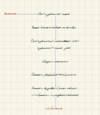Pharmacology of Asthma Flashcards
Beclomethasone diproprionate Budesonide Fluticasone Mometason Salbutamol Salmeterol Formoterol Montelukast Ipratropium Aclidinium Glycopyrronium Tiotropium
What are the 4 main beta-2 adrenergic receptor agonists used to treat asthma?
- Salbutamol (Short-acting)
- Salmeterol (Long-acting)
- Formoterol (Long-acting)
- Vilanterol (Long-acting)
What is salbutamol used for?
- Inhaled short-acting beta-2-adrenergic receptor agonist used as a bronchodilator in the management of asthma, COPD, bronchitis, as well as prevent exercise induced bronchospasms
What is the primary drug target of salbutamol?
- Beta-2 adrenergic receptor
What is the drug target type of salbutamol?
- Receptor agonist
What is the location of action of salbutamol?
- Bronchial muscles
What is the mechanism of action of salbutamol?
- Bind on beta-2 adrenergic receptors on airway smooth muscle
- Activation of adenyl cyclase
- Increase in intracellular concentration of cyclic-3’-5’-adenosine monophosphate
- Ativation of protein kinase a
- Decrease in phosphorylation of myosin
- Decrease in intracellular ionic calcium concentrations
- Bronchus relaxations

What are the main adverse effects of salbutamol (3)?
- Palpitations
- Tachycardia / Arrhythmia
- Hypokalaemia
What is salmeterol used for?
- Inhaled long-acting beta-2-adrenergic receptor agonist used as a bronchodilator in the management of asthma and COPD
What is the primary drug target of salmeterol?
- Beta-2 adrenergic receptor
What is the drug target type of salmeterol?
- Receptor agonist
What is the location of action of salmeterol?
- Bronchial muscles
What is the mechanism of action of salmeterol?
- Bind on beta-2 adrenergic receptors on airway smooth muscle
- Activation of adenyl cyclase
- Increase in intracellular concentration of cyclic-3’-5’-adenosine monophosphate
- Ativation of protein kinase a
- Decrease in phosphorylation of myosin
- Decrease in intracellular ionic calcium concentrations
- Bronchus relaxations

What is the long-acting mechanism of action of salmeterol?
- Bind on beta-2 adrenergic receptors on airway smooth muscle
- Hydrophilic tail of salmeterol binds to leucine residues in the exo-site of the receptor almost irreversibly
- Salmeterol persists in the active site (reason for long duration)

What are the main adverse effects of salmeterol (5)?
- Trembling (particularly in the hands)
- Nervous tension
- Headaches
- Palpitations
- Muscle cramps
What is formoterol used for?
- Inhaled long-acting beta-2-adrenergic receptor agonist used as a bronchodilator in the management of asthma and COPD
What is the primary drug target of formoterol?
- Beta-2 adrenergic receptor
What is the drug target type of formoterol?
- Receptor agonist
What is the location of action of formoterol?
- Bronchial muscles
What is the mechanism of action of formoterol?
- Bind on beta-2 adrenergic receptors on airway smooth muscle
- Activation of adenyl cyclase
- Increase in intracellular concentration of cyclic-3’-5’-adenosine monophosphate
- Ativation of protein kinase a
- Decrease in phosphorylation of myosin
- Decrease in intracellular ionic calcium concentrations
- Bronchus relaxations

What is the long-acting mechanism of action of formoterol?
- Bind on beta-2 adrenergic receptors on airway smooth muscle
- Hydrophilic tail of formoterol binds to leucine residues in the exo-site of the receptor almost irreversibly
- Formoterol persists in the active site (reason for long duration)

What are the main adverse effects of formoterol (5)?
- Trembling (particularly in the hands)
- Nervous tension
- Headaches
- Palpitations
- Muscle cramps
What is vilanterol used for?
- Inhaled long-acting beta-2-adrenergic receptor agonist used combination with other bronchodilators in the management of COPD, including chronic bronchitis and/or emphysema
What is the primary drug target of vilanterol?
- Beta-2 adrenergic receptor
What is the drug target type of vilanterol?
- Receptor agonist













